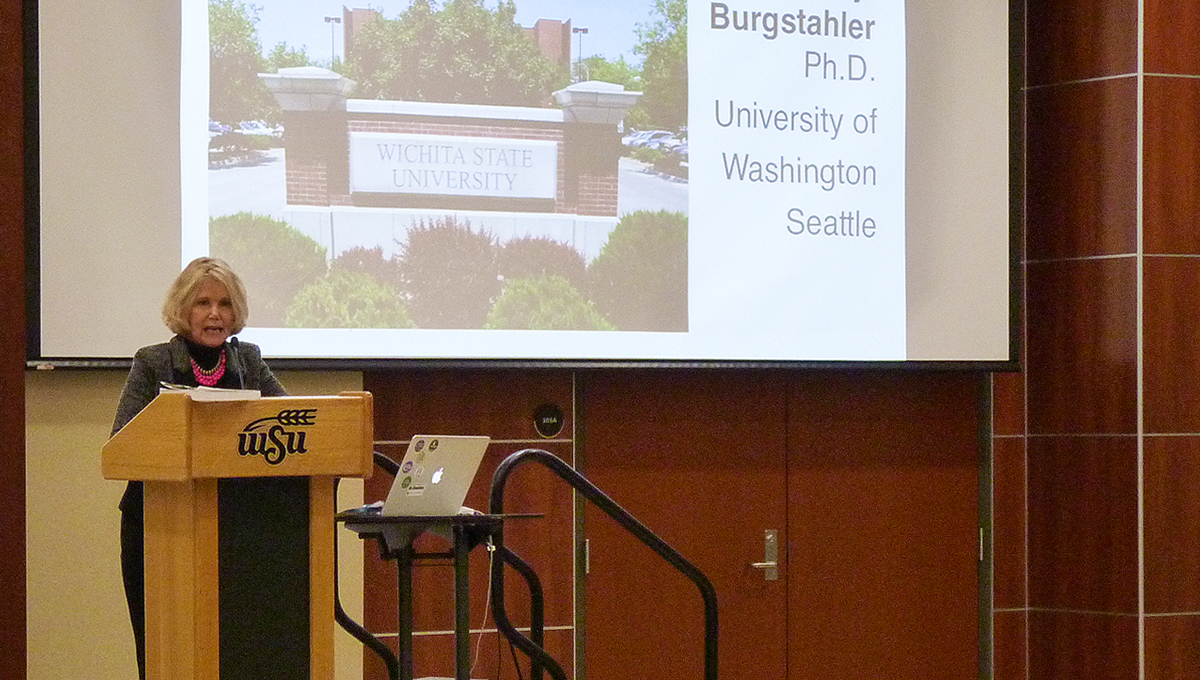Faculty, educators and staff from various Wichita State entities participated in a Universal Design of Instruction (UDI) workshop, hosted by the WSU College of Health Professions (CHP).
UDI is a scientifically based concept that emphasizes inclusive practices to maximize student success, including those with ranges in ability, disability, age, learning style, language, race and ethnicity.
Examples of UDI practices include ensuring physical access to facilities, arranging classroom seating for clear lines of sight, providing materials in accessible electronic formats and captioning and transcribing videos. UDI can be applied to all aspects of instruction, including classroom environment, delivery methods, information resources and technology, feedback and assessment.
Sandra Bibb, dean of the College of Health Professions, says Universal Design of Instruction is about progressive positive change, and the CHP is moving forward in transforming their culture and how they think about instruction.
“Incorporating all these things without singling people out makes the Universal Design approach ideal for supporting diversity,” says Bibb. “We want to raise awareness regarding diversity that is invisible, in terms of learning needs, while continuing our focus on the importance of arranging for accommodation.”
Sheryl Burgstahler, affiliate professor in the College of Education at the University of Washington, designed and facilitated two small group discussions and a large workshop. In all three forums she emphasized that a universal design approach to curriculum can contribute to a more inclusive university culture.
“Most disabilities are invisible, and a student's strengths and weaknesses are not always obvious,” she says. “We need to ask ourselves what we can do to be proactive and not just responsive.”
Burgstahler's teaching and research focus on the successful transition of students with disabilities to college and careers and on the application of universal design to physical spaces, student services, technology and learning activities. She is also the founder and director of the DO-IT (Disabilities, Opportunities, Internetworking and Technology) Center and the Access Technology Center (ATC). For more information visit the Center for Universal Design's website.
The Instructional Design and Technology group in the Media Resources Center is an additional resource at WSU for UDI. The instructional designers provide consultation, resources and training for instructors and departments interested in learning more about applying universal design principals to their classes.


 Jaime Stoskopf
Jaime Stoskopf